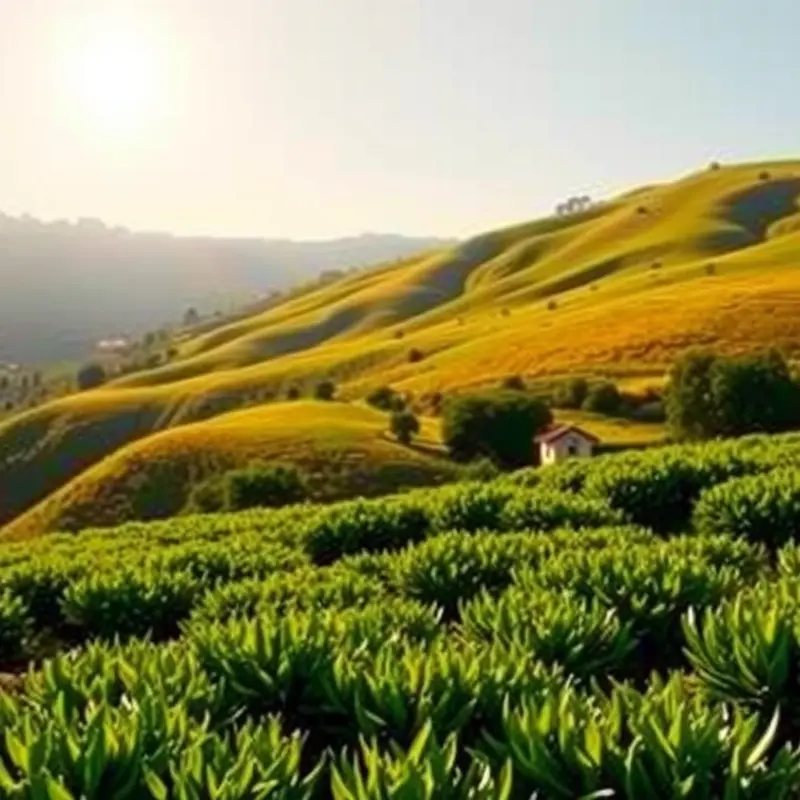Beverages are an intrinsic part of culinary traditions, telling stories of culture, history, and community. Each nation boasts a signature drink that reflects its local ingredients and heritage. From the invigorating matcha of Japan to the robust mate of Argentina, these drinks offer a delicious taste of their respective cultures. Join us as we explore some of these fascinating national drinks that not only tantalize the taste buds but also embody the spirit of their peoples.
A Toast to Tea: The Rituals of Japan’s Matcha

Matcha, the finely powdered green tea from Japan, is more than just a beverage; it embodies centuries of tradition and ritual. This vibrant green concoction is at the heart of the Japanese tea ceremony, showcasing a pursuit of harmony and mindfulness.
The origins of matcha date back to the 9th century when it was brought to Japan by Buddhist monks. They appreciated its calming yet invigorating effects, which aided in meditation practices. As the centuries progressed, matcha became intertwined with Zen Buddhism, aligning with the principles of simplicity and harmony.
The preparation of matcha is not merely a culinary process but an intimate ceremonial act. In a cha-no-yu, or tea ceremony, every movement, from the whisking of the tea to the serving, is deliberate and meditative. The tea is traditionally prepared in a small tea house or a garden setting, fostering a sense of peace and connection with nature.
A bamboo whisk, known as a chasen, is essential for preparing matcha. The powdered tea is gently whisked with hot water until frothy. The resulting drink is smooth, with a rich umami flavor and vibrant color. Each sip offers a moment to reflect on the simplicity and beauty inherent in life’s small details.
Matcha has become a celebrated symbol of Japanese hospitality, known as omotenashi. This concept embodies a thoughtful and selfless approach to welcoming guests, ensuring a personal and memorable experience. Sharing a bowl of matcha with a guest is an expression of this deep-seated cultural value.
Beyond its cultural significance, matcha is lauded for its health benefits. Rich in antioxidants, it is believed to support overall well-being and mental clarity. For those exploring plant-based nutrition, matcha’s nutrient profile offers a flavorful, natural addition to one’s diet.
In recent years, matcha has grown in global popularity, spurring a culinary evolution that honors its roots while exploring new possibilities. From matcha-infused pastries to innovative drinks, this traditional tea continues to inspire creative adaptations without losing its essence.
Through matcha, we witness a unique blend of history, artistry, and hospitality. Whether experienced in a serene Japanese tea house or sipped at a modern cafe, the ritual of matcha provides a shared connection that transcends borders. As we sip this revered green powder, we partake in a tradition that speaks to the universal human desire for balance and tranquility.
For more on how global culinary traditions influence each other, see Culinary Influences Through Trade.
Cultural Connections: Argentina’s Mate Ceremony

In Argentina, the act of drinking mate transcends mere consumption. This herbal infusion, derived from the Ilex paraguariensis plant, embodies the spirit of community and tradition. Sharing mate is an invitation to connect, promoting deep bonds among friends and family.
At the heart of the mate experience is the gourd, often made from calabash, and the bombilla, a metal straw. The gourd is filled with the dried leaves, and hot water is poured, not boiled, as to not scald the leaves. The ritual begins with a communal circle. The cebador, or server, prepares the mate and takes the first sip—ensuring it is perfect before passing it counter-clockwise, symbolizing equality and unity.
Each participant drinks mate until the beverage loses its flavor. Oscar, a gaucho from Mendoza, recalls childhood afternoons sipping mate under the sun with his father, who passed down the tradition. For Oscar, mate is more than a drink; it’s a tangible link to his heritage.
Mate drinking has an unspoken code of etiquette. When receiving the gourd, hold it respectfully and take a drink until finished before passing it back to the cebador, who refills it for the next person. Verbal communication during sipping is limited, allowing the drink and shared silence to communicate emotions.
Why is mate so cherished in Argentina? Its origins are deeply rooted in indigenous Guaraní culture. The Guaraní believed mate had spiritual significance, a belief that resonates today. The infusion also offers health benefits similar to those found in functional herbs for mood stability. The caffeine-like compound mateine provides a gentle energy boost, fostering alertness without jitters.
As modernization creeps into rural and urban lifestyles, mate remains an enduring tradition. It bridges the gap between past and present, harmonizing the hustle of modern life with age-old customs. Whether in bustling Buenos Aires or the serene Pampas, mate integrates into everyday life, offering solace and companionship.
The cultural significance of mate captures the essence of Argentine hospitality. Tourists often find themselves invited to share a gourd, instantly welcomed into the social fabric. This act emphasizes the joy of living behind the beverage’s simplicity.
Mate’s simplicity contrasts with other global rituals, yet it remains unparalleled in its ability to connect people. Unlike coffee culture, which often isolates through screens and solitude, mate fosters proximity and interaction. For Argentines, life is best experienced with friends, family, and the warmth of a shared mate gourd.
Through sipping mate, Argentina’s soul is ready to embrace the world—one shared sip at a time.
Final words
From the meditative matcha ceremonies of Japan to the fellowship fostered through mate in Argentina, national drinks serve as cultural ambassadors. They encapsulate the essence of their respective societies through flavor, preparation, and social interaction. Whether sipped alone or shared among friends, every drink tells a tale that invites us to explore deeper connections with the world around us. By immersing ourselves in these traditions, we experience not only the tastes but also the heart and spirit of diverse cultures.








